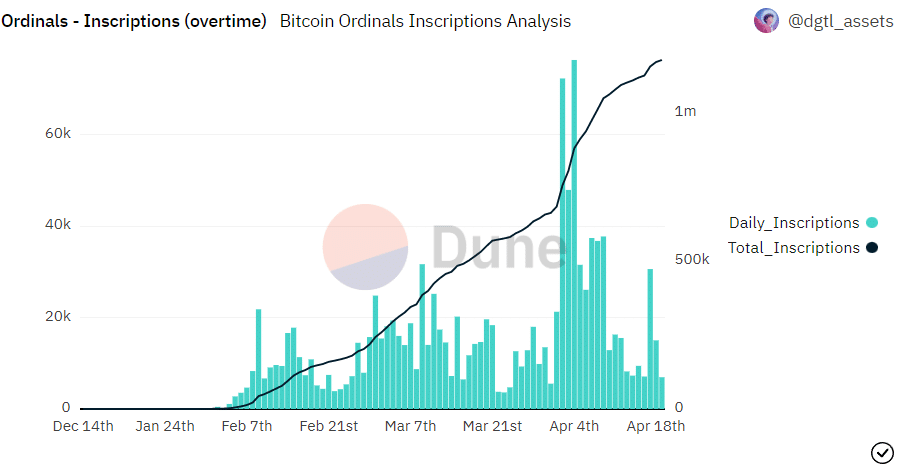Developments on Bitcoin, and more generally on the crypto sector, are proceeding at a rapid pace: a few days ago a former Bitcoin Core developer said that the NFT market is ready to take a step forward in terms of expanding new projects.
Meanwhile, another Bitcoin Core expert also announces an upcoming innovation on the Bitcoin node operator front.
Let’s take a look at the details of this news together.
Former Bitcoin Core developer believes the NFT industry is poised for improvement
According to Jeff Garzik, former developer of Bitcoin Core i.e., the beating heart of Bitcoin technology development, the NFT market is finally ready to churn out interesting new products having faded all the hype of 2021.
During the year of the cryptocurrency bull market, the sector of non-fungible tokens reached a peak of enthusiasm that prevented the development of serious protocols capable of bringing innovations to the market.
To date, in the words of Garzik, who is also founder of the company “NextCypher Productions“:
“The NFT market is pleasantly down-to-earth.”
Trading volumes on NFTs in the first quarter of 2023 increased by 137% according to data from DappRadar, but are still extremely far from those recorded during 2021.
Hence, this may be the most suitable time for new protocols to enter the NFT market by introducing useful innovations for the development of the industry.
Truth be told, one major player has already earned the esteem of the community of collectible token lovers, namely Blur.
The latter is a marketplace dedicated to professional NFT traders, which presents an advanced-level dashboard with numerous indicators that are very useful for understanding in which direction the most established collections are moving.
Among the most interesting data that Blur presents we find the floor price of NFT projects, changes on trading volumes, information on holders, supply and expected royalty.
The momentum of NFTs on Bitcoin
The development in the area of NFTs has been particularly interesting in what concerns the Bitcoin protocol.
Although it is indeed well known that on the main blockchain of the crypto world there are still no smart contracts capable of enabling the minting of NFTs, there has been one protocol in particular that has overcome this obstacle with a stratagem, namely Ordinals.
This protocol devised by Casey Rodarmor, developer of Bitcoin Core, has allowed the Bitcoin community to “inscribe” on individual satoshi the same data representing common NFTs.
This is a “linguistic” issue that allows for the creation of digital artifacts similar to non-fungible tokens minted on blockchains such as Ethereum.
In this way, the satoshi on which this information is transcribed become unique, and able to distinguish themselves from other “mundane” satoshi on which there is no additional data.
The only note to consider is that this information is immutable and cannot be deleted or changed later, which is the case with NFTs on Ethereum, Solana, Polygon, etc.
The “inscription” on satoshi was made possible by the Taproot update that went live in November 2021, which allows for increased scalability and privacy of the Bitcoin network.
Ordinals’ innovation is a simple compromise that does not disrupt the rules on which the Bitcoin protocol is based, but at the same time it has paved the way for a new era.
In this regard, the number of “inscriptions” recently surpassed one million, enabling the Bitcoin network to collect more than $5 million in fees since the launch of Ordinals.

James O’Beirne, Bitcoin Core developer, introduces a new prototype “pruned” node
Other innovations in the crypto world include the idea of James O’Beirne, current developer of Bitcoin Core, namely a new prototype of “pruned” nodes.
“Pruned” nodes have existed for some time and allow new nodes wishing to validate transactions on Bitcoin to save storage space on the hard drive.
A Bitcoin “full node,” in fact, would theoretically have to download the entire archive of transactions performed on the blockchain, which is equivalent to 464 GB, in order to begin its work.
At most, each new full node installs a hard drive with storage space greater than 1 TB.
Instead, “pruned” nodes can choose to download only those transactions that have been validated for 100 successive blocks and including the previous data in a single cryptographic hash.
Of course, there are tradeoffs for this particular type of node: once the node owner has enabled pruning, it cannot transmit old blocks over the Bitcoin network or verify old wallets.
James O’Beine’s invention allows this limitation to be overcome through a proposal called “assumeUTXO.”
Its premise is based on an experimental way for new complete Bitcoin nodes to delay their need to verify historical transactions until the user receives recent transactions.
Without going into technical details, one can simplify the Bitcoin Core developer’s proposal by considering that full nodes can optionally trust an instantaneous hash of the revised blockchain at a specific point in history, rather than considering 100 blocks like previous versions.
A pruned node can use that snapshot hash as a “security pass”
The new node in this way can delete the information used to perform the security check given by the specific hash on the next restart of the software client.
The result is a much smaller blockchain file of 464 GB.
It is important to mention that developers are still working to finalize the “assumeUTXO” proposal and this is not yet live on the Bitcoin network.


